Results 11,281 to 11,290 of 12091
Thread: Anandtech News
-
09-16-21, 02:31 PM #11281
Anandtech: USB 3.2 Gen 2x2 Portable SSDs Go Native: The Silicon Motion SM2320 UFD Con
The external storage market has experienced rapid growth over the last few years, particularly in the retail consumer segment. It has been fueled in part by advancements in bus-powered flash-based storage devices.
Thunderbolt SSDs are at the top in terms of both performance and price, but the last few years have seen various high-end portable SSDs with a USB interface. The USB 3.2 Gen 2x2 (20Gbps) ecosystem has been slowly gaining traction, with Kingston's XS2000 portable SSD being the latest to join the device lineup. Based on Silicon Motion's new SM232x family of UFD (USB flash drive) controllers, the product family offers full Gen 2x2 performance while consuming a fraction of the power needed by similar solutions currently in the market.
Silicon Motion sent across the bare reference board used inside the Kingston XS2000 to put through our rigorous direct-attached storage testing routine. Read on for our evaluation report of the SM2320XT reference design.
More...
-
09-17-21, 12:05 PM #11282
Anandtech: The OnLogic Helix HX500 Review: A Rugged Fanless 35W mini-PC
The emergence of edge computing as a paradigm has expanded the market for industrial PCs over the last few years. Traditionally an 'industrial PC' was built with a focus on reliable operation in a rugged environment - the emphasis on computing performance being secondary to the utility. This has changed recently with the need to process more data at the edge.
OnLogic (formerly, Logic Supply) has been servicing the embedded / industrial PC market with pre-configured small form-factor (SFF) systems since 2003. Their Helix line of fanless industrial PCs is based on Intel's Elkhart Lake (300-series) and Comet Lake (500 and 600-series) processors, catering to the increased demand for processing power in edge computing. Read on for a detailed look at the performance and value proposition of a high-end Helix HX500 configuration based on the 35W Intel Core i7-10700T.
More...
-
09-21-21, 10:06 AM #11283
Anandtech: Seagate Introduces IronWolf 525 PCIe 4.0 M.2 NVMe SSDs for NAS Systems
Seagate's IronWolf series of drives for network-attached storage systems has gained significant traction in its market segments. One of the primary reasons has been the breadth of offerings - high-capacity HDDs targeting different applications, as well as SATA and NVMe SSDs. In fact, Seagate was one of the first vendors to introduce SSDs targeting the prosumer / SMB / SME NAS markets with the IronWolf SSD 110 series at the 2019 CES. This 2.5" SATA SSD family was complemented by the announcement of the IronWolf 510 NVMe SSD family in Q1 2020. The SSD family, based on the Phison E12DC Enterprise SSD Controller, sported a 1DWPD rating that was not available in other SSDs targeting the prosumer / SMB NAS market.
Seagate is continuing their leadership march today with the launch of the IronWolf 525 NVMe SSDs. Based on the Phison E16 (PS5016-E16-32) PCIe 4.0 x4 NVMe SSD controller, the product appears to dial back to consumer roots with a 0.7 DWPD rating. Currently, there are no commercial off-the-shelf NAS offerings from the major vendors (Synology, QNAP, Asustor, etc.) with native PCIe 4.0 capability. The IronWolf 525 is backwards compatible with PCIe 3.0 and can slot into the same places where the IronWolf 510 is currently being used. Key confirmed specifications are captured in the table below.
Key value additions include the IronWolf Health Management (IHM) and Rescue Data Recovery Services (DRS). The former is an embedded software application that continuously monitors drive health parameters and notifies users appropriately to reduce probability of data loss on supported NAS platforms. The 3-year complimentary DRS provides data recovery services for accidental data corruption or drive damage.The Seagate IronWolf 525 SSDs for NAS Capacity 500 GB 1 TB 2TB Model Number ZP500NM30002 ZP1000NM30002 ZP2000NM30002 Controller Phison E16 NAND Flash Kioxia BiCS 4 96L 3D TLC NAND Form-Factor, Interface M.2-2280, PCIe 4.0 x4, NVMe 1.3 Double-Sided
(22.15mm x 80.15mm x 3.58mm)Seq. Read (128KB @ QD32) [ Normal / Sustained @ PCIe 4.0 x4 ] 5000 / 3300 MBps 5000 / 4350 MBps 5000 / 4300 MBps Seq. Write (128KB @ QD32) [ Normal / Sustained @ PCIe 4.0 x4 ] 2500 / 525 MBps 4400 / 995 MBps 4400 / 965 MBps Rand. Read IOPS (QD32T8) [ Normal @ PCIe 4.0 x4 ] 420K 760K 740K Rand. Write IOPS (QD32T8) [ Normal @ PCIe 4.0 x4 ] 630K 700K 700K Pseudo-SLC Caching Yes DRAM Buffer ? ? TCG Opal Encryption ? Power Consumption Avg Active 5.6 W 6.5 W Avg Sleep 20mW 20mW 30mW Warranty 5 years (including 3 years of Rescue Data Recovery Services) MTBF 1.8 million hours TBW 700 1400 2800 DWPD 0.7 UBER 1E10^16 Additional Information ? MSRP ? ? ?
Seagate intends the IronWolf 525 NVMe SSDs to be used in commercial and entry-level enterprise NAS units, high-performance workstations, and in U.2 NVMe SSD drive bays with U.2 to M.2 adapters. These SSDs appear to have the same hardware (including the Kioxia BiCS 4 96L 3D TLC flash) as the FireCuda 520 series, albeit with modified firmware to enable the NAS-specific features such as IHM. Consequently, pricing is expected to carry a slight premium over the FireCuda 520 currently retailing for $370 (2TB), $190 (1TB), and
Gallery: Seagate Introduces IronWolf 525 PCIe 4.0 M.2 NVMe SSDs for NAS Systems

More...
-
-
09-22-21, 10:18 AM #11285
Anandtech: Akasa M.2 SSD Enclosures Reviewed: Giving Spare Drives a New Lease of Life
The internal storage device market segment has seen rapid evolution over the last decade after the introduction of flash-based disk drives. Beginning with 2.5-inch SSDs in early 2010s, the market moved to mSATA units while the SATA-to-NVMe transition started to gather steam. With the PCIe 4.0 transition set in motion, many users are finding themselves with spare M.2 SSDs.
A common re-purposing method has been to place the SSD in a USB enclosure. Akasa is one of the few manufacturers to possess a SSD enclosure lineup catering to almost all possible scenarios in this market segment. Read on for our review of their M.2 SSD enclosures lineup - the Akasa AK-ENU3M2-02 (SATA), AK-ENU3M2-03 (NVMe), and the AK-ENU3M2-04 (SATA / NVMe).
More...
-
09-22-21, 12:56 PM #11286
Anandtech: Surface Laptop Studio, Surface 8 Pro Lead Microsoft's New Surface 2021 Lin
In anticipation of the upcoming Windows 11 launch, Microsoft is introducing an almost complete top to bottom refresh of their Surface device lineup. Ranging from the brand-new Surface Laptop studio to refreshed devices like the Surface Pro X, Microsoft's 2021 Surface lineup covers the entire spectrum, with some devices getting some minor tweaks while other devices are completely new. As tends to be the case, all of them feature quirks which are distinctively Surface.
More...
-
09-22-21, 04:49 PM #11287
Anandtech: Hands On With the Honor 50: One Vlog to Rule Them All
Prior to the Huawei/Honor split, I had my hands on almost every model or flagship that Honor made. The co-design with Huawei, along with a good high-middle market for those flagships, made them competitive products. However, Honor was sold to essentially run standalone, which meant it was no longer under the US entity list bans, and could leverage Google services again. The Honor 50 is one of these devices, offering a full Google experience, and opting to pair a 700-series Snapdragon SoC with a 108 MP camera and a 6.57-inch OLED display. We had some hands-on with the Honor 50 ahead of the launch next month in October.
More...
-
09-23-21, 09:48 AM #11288
Anandtech: Samsung's new 200MP HP1 Sensor: Sensible, or Marketing?
This week, Samsung LSI announced a new camera sensor that seemingly is pushing the limits of resolution within a mobile phone. The new S5KHP1, or simply HP1 sensor, pushes the resolution above 200 megapixels, almost doubling that of what’s currently being deployed in contemporary hardware in today’s phones.
More...
-
09-23-21, 09:48 AM #11289
Anandtech: Plugable TBT4-HUB3C Thunderbolt 4 Hub Capsule Review
Plugable is introducing its Thunderbolt 4 product lineup today, with the TBT4-HUB3C Thunderbolt 4 Hub leading the pack. Joining it are two Thunderbolt 4 cables - the 2m. long TBT4-40G2M, and the 1m. long TBT4-40G1M.
Intel had provided detailed updates on Thunderbolt 4 in mid-2020 before releasing it in Tiger Lake-based products. As peak bandwidth (40Gbps) didn't get an upgrade over Thunderbolt 3, many consumers just considered it a branding update. In fact, under the hood, the specifications were being fine-tuned to bring in some features from the USB world. It is these new features that Plugable is focusing on:
- Hub functionality in addition to the daisy-chaining scheme prevalent in previous Thunderbolt versions
- Active cables up to 2m in length and supporting up to 40Gbps speeds - maximum possible based on the host / device interfaces (Thunderbolt 3 active cables with non-Thunderbolt 3 Type-C devices are often limited to USB 2.0 speeds)
The TBT4-40G2M (active) and TBT4-40G1M (passive) are Intel-certified Thunderbolt 4 cables, priced at $59 ($49 after coupon application) and $34 ($29 after coupon application) respectively. The pricing premium is due to increased certification costs (the factory is required to get random manufacturing lots repeatedly tested for Thunderbolt 4 cables, compared to only the initial manufacturing run previously).
These cables complement the Thunderbolt 4 flagship from Plugable - the Goshen Ridge-based TBT4-HUB3C. The JHL8440 Goshen Ridge controller used in the hub is a quad-port solution - one upstream, and three downstream ports.
The TBT4-HUB3C comes with a 0.8m passive Thunderbolt 4 cable, a 110W power brick, and a bundled USB-C to HDMI adapter supporting resolutions up to 4Kp60 with HDR. The main hub itself is quite tiny compared to the power brick, measuring just 118 mm x 18 mm x 73 mm. Despite the small size, the unit has a solid look and feel with its brushed finish. The hub tips the scales at 201g, light enough to be considered pocketable.
Plugable also bundles a USBC-HDMI adapter (USB-C male to HDMI 2.0 female converter supporting DisplayPort Alternate Mode from the USB-C side) with the package. The intent is to route the incoming display signals from the host to one of the downstream Thunderbolt 4 ports, and then on to a HDMI monitor. This also brings out the benefits of the hub scheme - With daisy chaining no longer in the picture for most deployments (each spoke in the hub can still be a daisy chain in Thunderbolt 4), users do not need to worry about the placement of different Thunderbolt peripherals / displays in the chain. Additionally, it allows the peripherals to be disconnected independent of each other - something not possible in the chain topology without interrupting the links to peripherals intended to be kept active.
Performance Testing
The number of use-case scenarios for Thunderbolt 4 hubs such as the Plugable TBT4-HUB3C are too many to count. Our performance evaluation is restricted to the configurations specified below. The upstream port of the TBT4-HUB3C is connected to the Thunderbolt 4 port of the ASRock Industrial NUC BOX-1165G7 - a risky choice, given that the port is only certified for USB 3.2 Gen 2 / DisplayPort Alternate Mode. The downstream ports were connected as per the list below.
- Port #1 - DIY Thunderbolt 3 SSD using the TEKQ Rapide and the WD_BLACK SN750.
- Port #2 - PowerColor Gaming Station eGFX Solution with the PowerColor Radeon RX Vega 56 Nano.
- Port # - USBC-HDMI connector on to a LG34WK95U configured to display a 3840x2160 desktop at 60 Hz (8-bit RGB)
The Thunderbolt Control Center can be use to approve connected devices. All primary connections to the Thunderbolt port (other than the displays and associated routing fear) are visible in it.
Various workload combinations were processed to determine the real-world effects of bandwidth sharing between the peripherals connected to the hub. The DIY Thunderbolt 3 SSD was subject to a fio workload, while the eGPU in the Gaming Station was subject to an OpenCL bandwidth test (transferring data from the host to the device VRAM, and back).
It must be noted that the Thunderbolt data rates are bidirectional - logically speaking, we have a 40 Gbps link from the host to the device, and another 40 Gbps link from the device to the host. As part of our experiments, we attempted to activate traffic in pairs - one set with the display routing turned off, and another set with the USBC-HDMI part active.Plugable Thunderbolt 4 Hub (TBT4-HUB3C)
Bandwidth Sharing Analysis (Gbps)Port #1 (DIY TEKQ Rapide Thunderbolt 3 SSD Port #2 (PowerColor Gaming Station eGFX Enclosure) Port #3 (Connection to LG34WK95U via Plugable's USBC-HDMI) Reads Writes Device-to-Host Host-to-Device - - - 20.57 - - - 22.11 - - - 19.5 - - - 21.4 - - - - - - 11.44 10.98 - - 16.2 16.74 - - 13.7 - - 17.64 - - - - 13.78 14.4 - - 22.12 - 14.4 - 14.1 - - 14.4 23.0 - - - 14.4 - - 8.99 9.21 14.4 - 11.0 19.14 - 14.4 13.5 - - 12.46 14.4
It can be observed that activating the display output link reduces performance for the host-to-device traffic from 20.57 Gbps to 13.78 Gbps, while total used bandwidth on the host to device side moves up from 20.57 Gbps to 28.5 Gbps. On the return side, the maximum bandwidth seen turned out to be 22.11 Gbps.
Investigation of 5K display outputs from the hub's downstream port, and its bandwidth implications will be covered in future reviews.
Concluding Remarks
The Plugable TBT4-HUB3C brings out the capabilities / advantages of Thunderbolt 4 over previous Thunderbolt versions in an effective and user-friendly manner. The hub functionality brings Thunderbolt and traditional consumer understanding of USB functionality to the same table, and this can only be good for the market as USB4 begins to gain traction.
The TBT4-HUB3C is able to support 40 Gbps in total over the three downstream ports without favoring one port over the other. While we evaluated a number of interesting use-cases involving displays, Thunderbolt SSDs, and eGPUs, the possibilities enabled by the hub are much more varied. With backwards compatibility - we even tested functionality of the device as a USB 2.0 hub when connected to a USB 2.0 port - in the picture, it can be safely said that the hub's functionality is limited only by the features of the upstream host port.
At $174 (after applying a $15 off coupon on the $189 MSRP), the hub presents a great value proposition in this space. Plugable is a bit late to the Thunderbolt 4 market, as other Goshen Ridge solutions have been available in the market for a while now (though supply chain issues have meant that actual availability has been limited). All the Thunderbolt 4 hubs / docks use the quad-port JHL8440 to full effect, enabling one upstream Thunderbolt 4 port, and three downstream Thunderbolt 4 ports. For $230, the CalDigit Thunderbolt 4 Element Hub tags on additional USB 3.2 Gen 2 ports. Razer has two docks - a 10-port version with a SD card slot, audio jack, an Ethernet port, and three USB 3.2 Gen 2 ports for $320, and a RGB version of the same for $330. The Kensington SD5700T priced at $330 is similar to the Razer dock, but with an additional USB-A charging-only port.
The closest competitor to the Plugable TBT4-HUB3C is actually the OWC Thunderbolt Hub that has a similar form-factor and ports layout. It does have a USB 3.2 Gen 2 Type-A port in addition for its $179 price point. Despite undercutting the OWC unit by $5, Plugable has managed to include a $20 value addition in the USBC-HDMI adapter. Overall, Plugable has an effective entry-level Thunderbolt 4 product bound to expand market adoption and understanding of the latest Thunderbolt 4 and USB4 ecosystem. We look forward to the company expanding its offerings and create a TBT4 lineup similar to what they currently carry for Thunderbolt 3.
More...
-
09-23-21, 02:08 PM #11290
Anandtech: EVGA Releases the X570 Dark: First Ryzen Motherboard from EVGA, Built for
Back in July, we reported that EVGA was teasing its first AMD-based motherboard since the AM2+ days. Fast forward to now, and that dream of an EVGA model for AMD's Ryzen processors led by in-house engineer and extreme overclocker Vince 'KINGPIN' Lucido is now a reality. The EVGA X570 Dark benefits from a large premium 17-phase power delivery (14+2+1) designed for pushing Ryzen 5000 to its limits and support for up to DDR4-4800 out of the box across two memory slots to minimize latency.
The EVGA X570 Dark, as expected, is primarily suited to extreme overclockers, with a variety of performance-enhancing features across the large E-ATX sized PCB. One of the most notable design characteristics includes a transposed AM4 CPU socket for better support when mounting an LN2 (liquid nitrogen) pot, and an empty CPU socket area to minimize risks when insulating for sub-ambient cooling. All the major power connectors are also at right angles, to be less of an issue when extreme overclocking for records.
EVGA uses a 16-phase power delivery organized into a 14+2 configuration, with fourteen premium 90 A power stages for the CPU section. It's a slightly different design to accommodate the transposed socket as it stretches around the bottom of the AM4 socket. It is using active VRM cooling with two cooling fans and uses a 10-layer PCB design. The 17th power stage is for the memory. Providing power to the CPU is a pair of 8-pin 12 V ATX CPU power inputs. Some of the most notable features of the EVGA X570 Dark include voltage monitoring points at the top of the board, as well as a variety of switches to enable/disable features that might be critical to sub-zero overclocking stability.
For end-users wanting to have a daily system, there are dual PCIe 4.0 x4 M.2 slots, eight SATA ports with support for RAID 0, 1, and 10 arrays, as well as 2.5 GbE wired and Wi-Fi 6 wireless networking. Looking at PCIe support, EVGA includes two full-length PCIe 4.0 slots operating at x16 and x8/x8, with a half-length PCIe 3.0 x4 slot. Other features include a Realtek ALC1220 HD audio codec backed by EVGA's NU audio solution, eight 4-pin cooling headers, a passively cooled chipset heatsink, and two USB 3.2 G2 Type-A, four USB 3.2 G1 Type-A, and one USB 3.2 G2 Type-C port on the rear panel.
The EVGA X570 Dark is currently available to purchase directly from the EVGA website for $690. This isn't a cheap motherboard, but overclocking-focused motherboards such as this come at a hefty premium. Although it has plenty of features for a daily Ryzen 5000 based system, the hope is that it provides the substance for extreme overclockers looking to push Ryzen 5000 silicon to its limits.
Our review of the EVGA X570 Dark will be coming very soon - it arrived a couple of days ago and is currently on our testbed!
Gallery: EVGA Releases X570 Dark Motherboard, Overclocking Flagship For AMD Ryzen 5000





Related Reading- EVGA Teases an AMD X570 Dark Edition: For Ryzen 5000 Enthusiasts
- Best AMD Motherboards: September 2021
- MSI Launches MEG X570S Ace Max Motherboard, Max Out Ryzen 5000
- Investigating Performance of Multi-Threading on Zen 3 and AMD Ryzen 5000
More...
Thread Information
Users Browsing this Thread
There are currently 20 users browsing this thread. (0 members and 20 guests)





 Quote
Quote
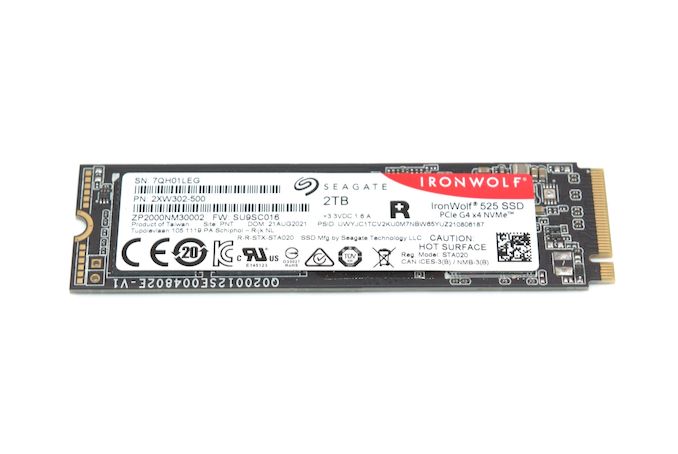
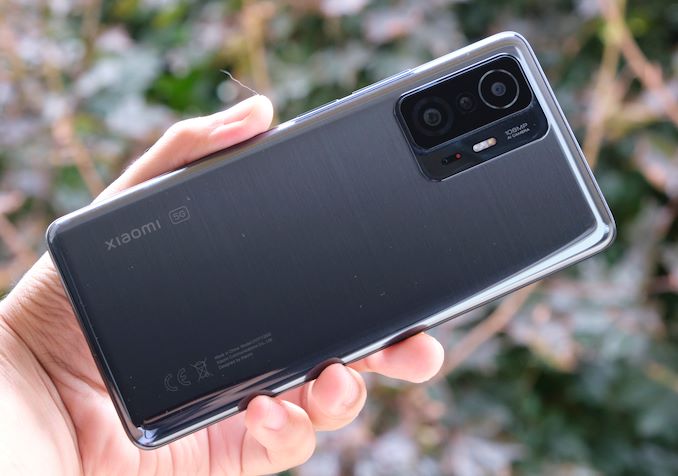

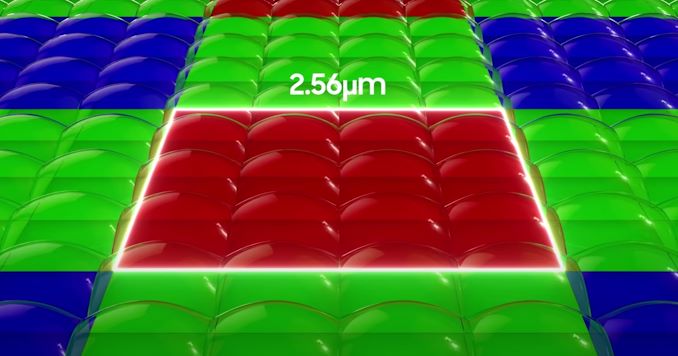

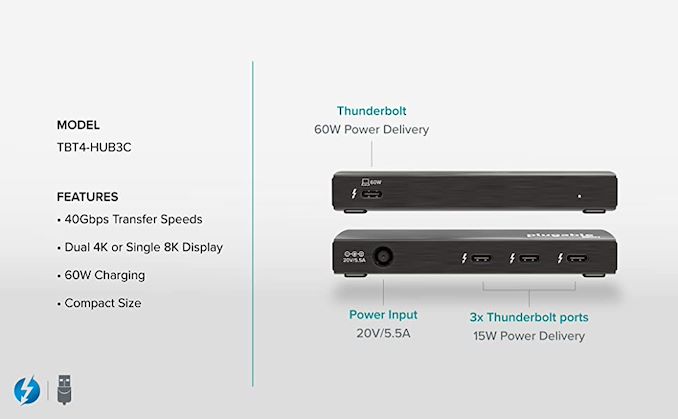

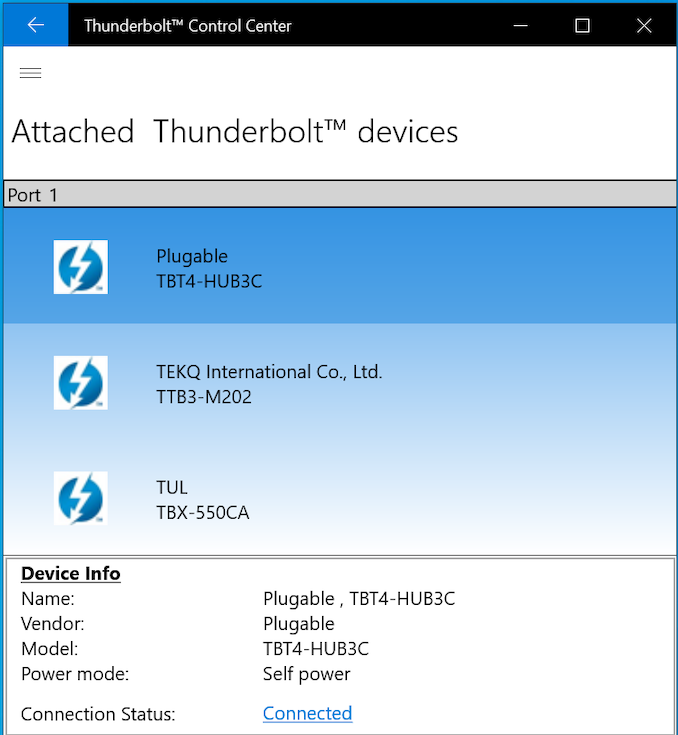

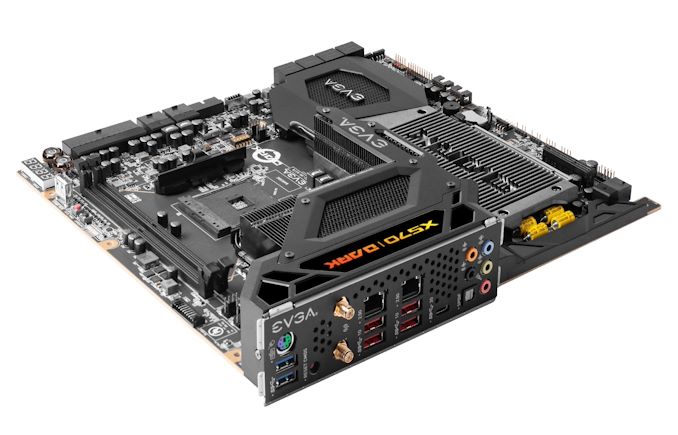
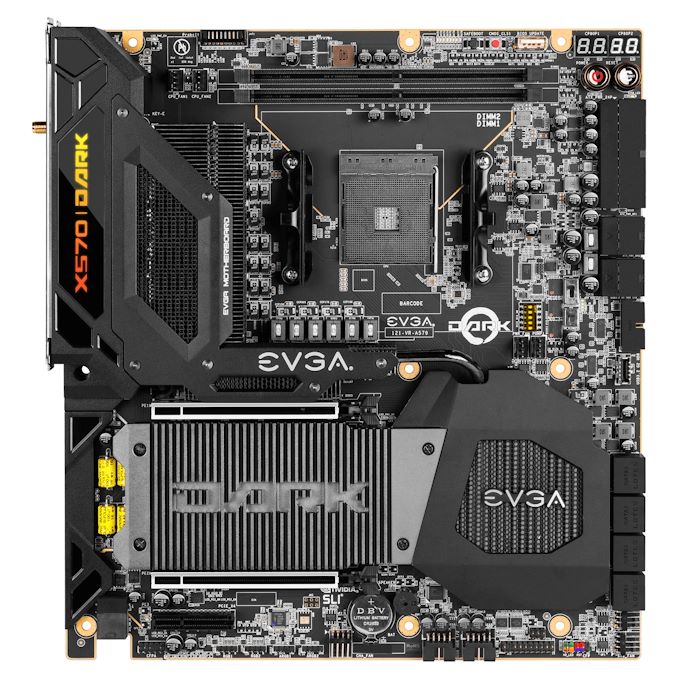
















Bookmarks